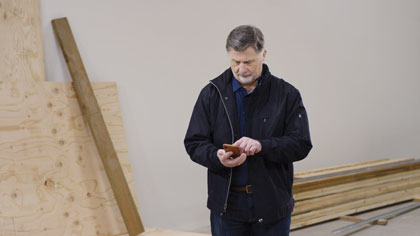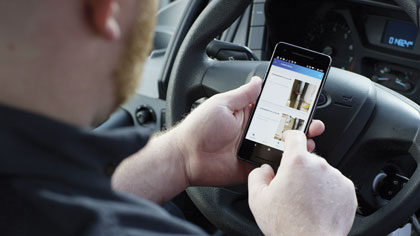The commercial construction industry has an efficiency problem. According to a study by McKinsey, construction has had the lowest productivity gains of any industry in recent years and is the least digitized. Both of these factors result in an estimated $1.6 trillion in lost opportunity per year. In addition, the on-going shortage of experienced labor only worsens our inability to fully capture the opportunity available.
Technology has been key to productivity gains in other industries. But, in commercial construction, workflow, business margins, and in-field realities demand that any new system be simple to use, easy to roll out, and immediately valuable.
Augmented Reality (AR) may sound like a futuristic buzzword, but it’s actually a practical tool that is already saving time and enabling growth in commercial construction. Better yet, using it has become as straightforward as making a phone call.
MORE ON THE ISSUES
A shortage in labor is one of the top reasons for lack of productivity and efficiency in the construction industry. Let’s look more at the labor shortage to add substance to what you’re probably already feeling most days. The industry lost 2 million construction workers in the midst of the great recession and has yet to fully recover staffing levels. Training programs and rising wages will help, but new entrants have less experience than those who were lost.
A shortage of personnel can be overcome by making more efficient use of the existing workforce. However, efficiency lost due to transit between jobsites, waiting on parts or materials, auditing team progress against project plans, and responding to unanticipated issues on site create their own set of challenges.
To successfully address these issues, experienced managers or other subject matter experts must be more hands on to keep projects on track.

Supervisors can utilize AR to remotely check on progress of every site on a daily basis without spending hours in the truck.
How can Augmented Reality help?
Augmented reality is changing the way we view the world. The ability to integrate digital information with the user’s real-world environment from a smartphone camera will have an immeasurable impact on the way business is done. Utilizing AR, pros are able to see the same image as their on-site crew or customers are viewing. They can use virtual versions of familiar tools like laser pointers and sticky arrows, and automatically capture critical job information.
Here are some thoughts from industry professionals on how AR is positively impacting their everyday work by saving time and boosting productivity:
Remote expertise: In a commercial construction setting, a supervisor, engineer, or seasoned expert can utilize AR to “transport” themselves to a jobsite to troubleshoot and diagnose an issue without having to rely on verbal description via cell phone or having to physically travel to the site. Using AR visual overlays, the supervisor can make digital measurements, share notes with the crew, save information for a report, or identify a potential issue before installation is complete.
Audits and risk avoidance: Supervisors can utilize AR to remotely check on progress of every site on a daily basis without spending hours in the truck. Supervisors can ensure execution is to plan or show the implications of a change request to a client without waiting for them to visit the site. The remote nature of AR allows for fewer surprises, more accountability, and faster progress.

Prior to traveling to a jobsite, supervisors can check progress.
Accelerated staff training: Prior to entering the jobsite, supervisors can use AR to prepare professionals by overlaying instructions and other helpful data or by sharing photos or the recording of sessions with a client or architect, ensuring full preparation and strategy for his/her team.
At Streem we’ve implemented what we call intelligent video—our combination of AR, machine learning, and computer vision—to save time, improve workflow, and generally help pros get more out of their business. But, the technology is secondary to us. Our team is grounded in the real world of an industry that has lived too long with productivity and workforce issues. For us, AR is a tool, but a very powerful one in the industry’s efforts to cut inefficiencies, accelerate job completion, and create happy professionals and customers. ν
About the Author:
Ryan Fink is CEO and co-founder of Streem, a technology company connecting home service professionals to their customers through intelligent, on-demand video streaming. For more information, visit www.streem.pro.
_________________________________________________________________________
Modern Contractor Solutions, March 2018
Did you enjoy this article?
Subscribe to the FREE Digital Edition of Modern Contractor Solutions magazine.



